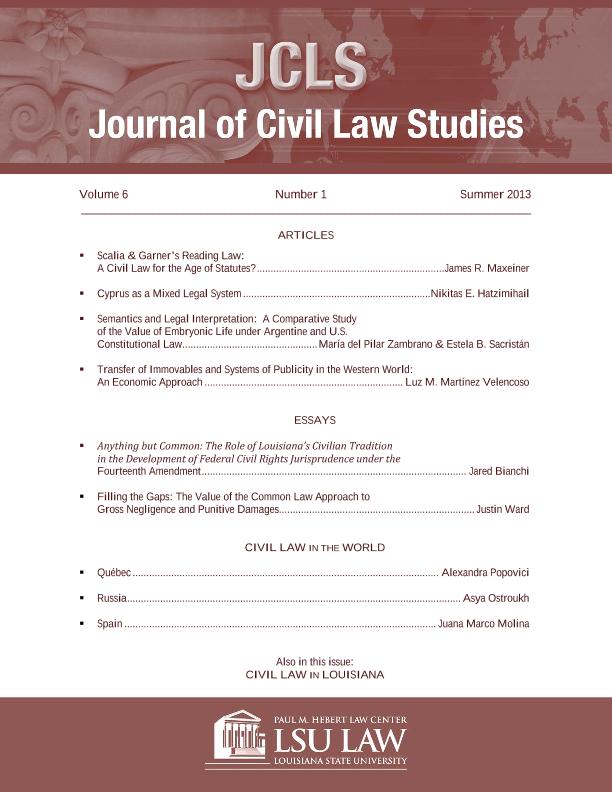Artículo
Semantics and legal interpretation. an approach from a comparative study of the value of embryonic life under the argentine and U.S. constitutional case law
Fecha de publicación:
02/2013
Editorial:
Lousiana State University. Paul M. Hebert Law Center. Center of Civil Law Studies
Revista:
Journal of Civil Law Studies
ISSN:
1944-3749
Idioma:
Inglés
Tipo de recurso:
Artículo publicado
Clasificación temática:
Resumen
The question regarding the legal status of the embryo hinges around a more conceptual or, rather, more fundamental legal distinction, namely, the distinction between things and persons. What is involved here is determining whether embryonic human life is personal life and, thus, whether the embryo has rights or whether is it just the object of somebody else´s rights. The claim that the legal value of embryonic life depends upon its stage of development and its viability perspectives is one of the main arguments in favor of a right to abortion in American constitutional Case law and, extensively, in favor of the right -and sometimes duty- to discard embryos (section 2). On the other hand, Argentine constitutional case law -with some exceptions- acknowledges a personal nature in each and every human being from the time of conception, which is, in turn, placed at the moment of fertilization (setion 3). Although the arguments raised in each of these legal practices for or against embryonic life legal protection arise in different normative contexts, the creative nature of constitutional interpretation justifies the comparative approach propounded in this review. But creativity in interpretation operates within the frame given by two margins: the teleological one and the linguistic or, more generally, the semantic one. With these restrictions in mind, the questions that this comparative study aims at answering are: (a) Which is the justificatory or teleological perspective of interpretation assumed or postulated in each of these case law practices?; (b) Which is the semantic theory undergrounding the whole interpretative process in each of these case law practices?; (c) Which of these teleological and semantic postulates best fit the final aims or values of constitutional Law? In the end, we aim at reflecting upon the reciprocal influence between these two margins of interpretation. Particularly, we aim at testing the coherence between, on the one side, the claim that fundamental rights are deontological and, on the other, the assumption of a constructive or criterial semantic theory of language when interpreting the concept of legal personhood.
Palabras clave:
Semántica
,
Embrión
,
Realismo
,
Convencionalismo
Archivos asociados
Licencia
Identificadores
Colecciones
Articulos(SEDE CENTRAL)
Articulos de SEDE CENTRAL
Articulos de SEDE CENTRAL
Citación
Zambrano, María del Pilar; Sacristán, Estela; Semantics and legal interpretation. an approach from a comparative study of the value of embryonic life under the argentine and U.S. constitutional case law; Lousiana State University. Paul M. Hebert Law Center. Center of Civil Law Studies; Journal of Civil Law Studies; 6; 1; 2-2013; 97-140
Compartir




